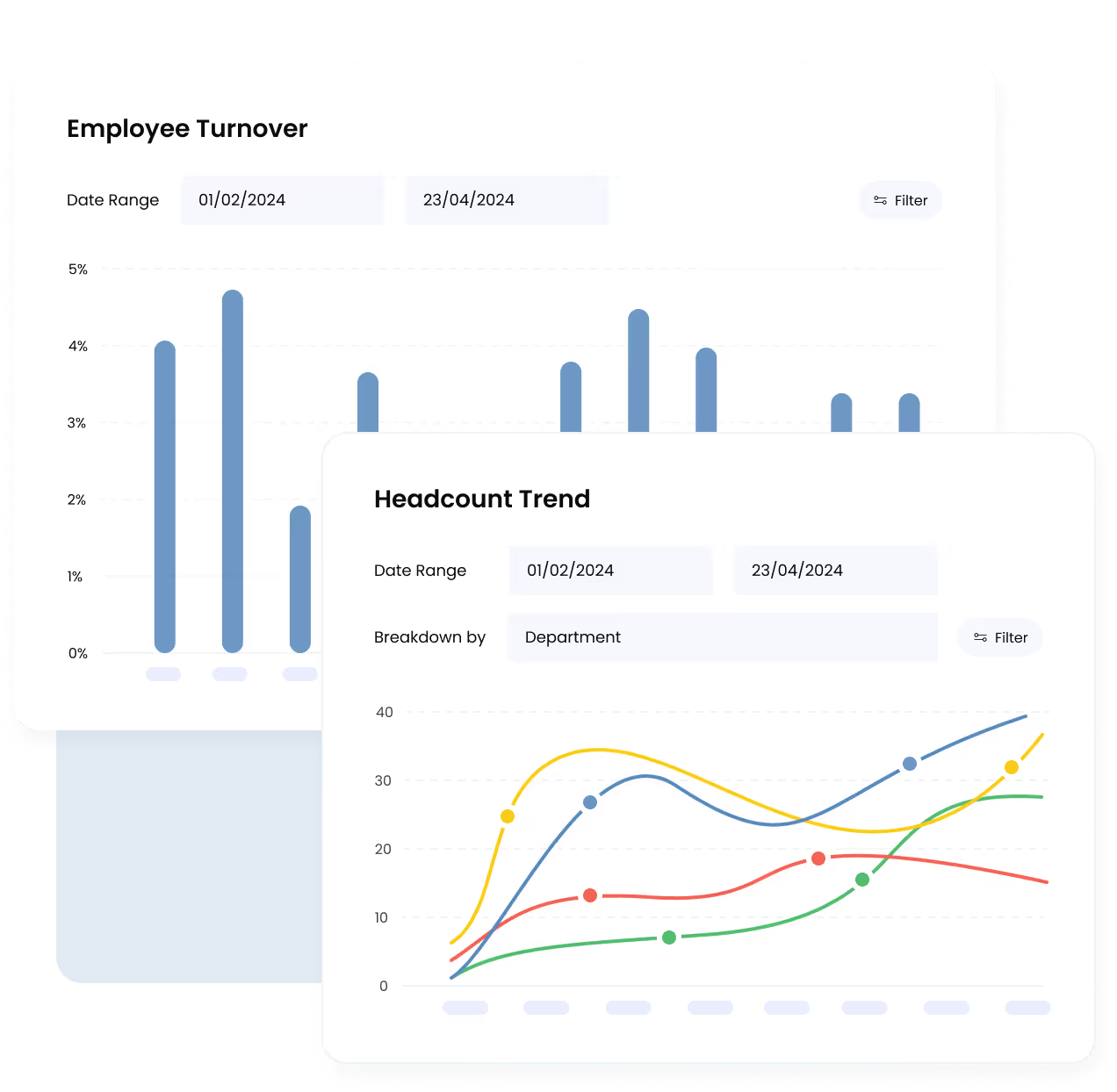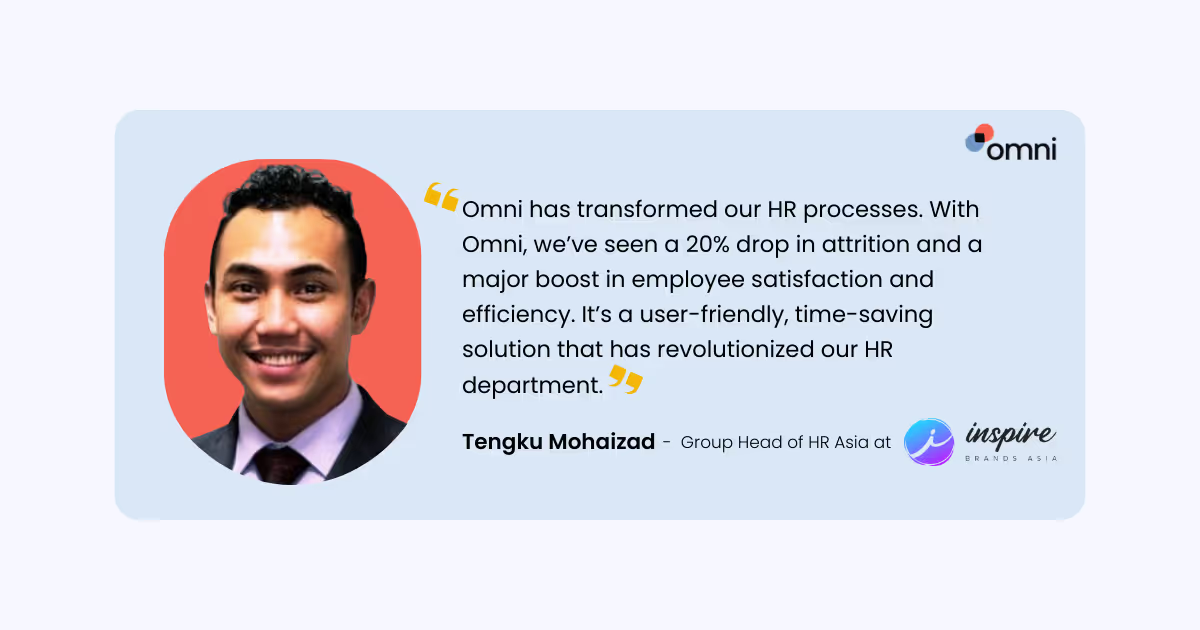Summary. Attrition in BPO is more than just a staffing challenge. It comes with real costs like lost productivity, increased recruitment expenses, and client dissatisfaction. Understanding these impacts is crucial for HR teams in the Asia-Pacific region. Implementing the right HR strategies and software can help reduce turnover by improving hiring accuracy, streamlining onboarding, enabling real-time feedback, providing clear career paths, and fostering employee recognition. Addressing attrition effectively is key to building a resilient, engaged BPO workforce.
High turnover in BPOs is something HR teams know all too well. It’s more than a numbers issue; it chips away at your time, your energy, and your ability to focus on what really matters.
In the Asia-Pacific region, where outsourcing is a major industry, attrition in BPO companies continues to be a serious concern. Some APAC call centers lose up to 70% of their staff in a year. Even the better ones see 30 to 45%, numbers most industries wouldn’t survive.
So why is this happening? What is attrition in BPO, and why does it hit this industry so hard? Simply put, attrition refers to employee turnover, i.e., the percentage of staff leaving a BPO organization over a given period.
The work itself is tough, repetitive, and often tied to odd hours. With little growth, rushed training, and rare recognition, many see it as a short-term job, not a long-term path. But here’s the bigger question: can the right HR systems actually help prevent all this churn?
That’s what we’re looking into here. While attrition in BPO may feel inevitable, the real problem might be hiding in plain sight — in the way companies hire, onboard, support, and engage their people.
Read next: 7 Must-Have HR Policies for Every BPO Company
Real Cost of Attrition in BPO
Losing people isn’t just a staffing issue. It hits your HR budget, your team’s morale, and your client relationships. And in BPOs, where turnover happens fast, those hits add up quickly.
Understanding the numbers
Let’s start with the basics. The attrition formula in BPO is simple:
Attrition rate = (number of employees who left ÷ average number of employees) × 100
If you have 500 employees and 150 leave in a year, that’s a 30% attrition rate. In most industries, that’s a major concern. In BPOs, it’s treated as business as usual, but it shouldn’t be.
Every exit costs time, money, and momentum. New hires take weeks to ramp up, productivity drops and pressure on the rest of the team builds. When experienced people leave, service slips, and clients notice. Once trust is shaken, it’s hard to get back.
Knowing your numbers is a start; now let’s dive into some common reasons for attrition in BPO.
Common causes of employee attrition
When we talk about attrition in BPO, it’s easy to blame the nature of the job. But more often than not, people leave because something important is missing from their day-to-day experience. Here are the most common causes of employee attrition:
- Lack of career growth: Many BPO employees come in with ambition. They want to learn, get better, and move up. But when there are no clear employee development programs or visible opportunities, that excitement fades. When people don’t see a future where they are, they start looking for it somewhere else.
- Inadequate training: Throwing someone into a live call after two days of rushed onboarding doesn’t set them up to succeed. Without proper support and ongoing training, even the most promising hires begin to second-guess their decision to stay.
- Poor work-life balance/burnout: The pace in BPOs is fast. Add night shifts, back-to-back calls, and pressure to meet strict KPIs, and the risk of burnout climbs quickly. When people feel like they’re always “on” with no time to rest or recharge, walking away starts to feel like the only way to breathe again.
- Limited employee recognition: Everyone wants to feel seen. A simple “thank you” or a quick shout-out for handling a tough situation can go a long way. But when great work is constantly overlooked, it sends a message that it doesn’t matter. Over time, that silence causes employee attrition.
Real business costs
- Recruitment and onboarding costs: Hiring is not cheap. From job ads to interview hours to onboarding sessions, the cost adds up quickly. When people keep leaving, HR is stuck in a constant cycle of recruiting and training. That means more time, more money, and less focus on improving the employee experience.
- Lower productivity: It takes time for a new hire to get fully up to speed. Until then, things slow down. Calls can take longer, mistakes are more likely, and team output may drop. And while one person learning the ropes is manageable, multiple new hires at once can create serious bottlenecks.
- Client dissatisfaction: Clients expect consistency, and when staff turnover is high, service quality can dip. New employees may not have the product knowledge or confidence yet, which can lead to slower resolutions and dropped balls. If this happens often, trust breaks down and so do your SLAs.
- Burnout: When someone leaves, their workload doesn’t disappear. It lands on the shoulders of whoever’s left. If this keeps happening, even your most committed employees start to feel overwhelmed. Eventually, they burn out too. And the attrition in BPO cycle continues.
Ways HR Software Help Reduce Attrition
The reasons people leave are clear but also fixable. With the right tools in place, HR teams can address the real causes of employee attrition before they turn into resignations. Here’s how to control attrition in BPO using HR software:
1. Smarter hiring with predictive analytics
Hiring the right people is the first defense against high attrition in BPO. If you can identify candidates who are not only qualified but also likely to stay longer, you reduce future turnover. Traditional hiring often relies on basic screening interviews, which can let poor-fit candidates slip through; with predictive analytics, HR can now make data-driven decisions.
Predictive analytics can crunch data from past hires—looking at which hires succeeded and stayed vs. those who quit quickly—to find patterns.

For example, systems like Omni with HR analytics can analyze employee turnover and headcount trend data to reveal that candidates with certain skill sets, personalities, or experience tend to thrive in your BPO, whereas others tend to leave within months. With these insights, your recruitment team can better target the right talent and even flag “attrition risk” candidates during hiring.
2. Faster and friendlier onboarding
Onboarding is the process that welcomes and integrates new hires, and if it’s poorly executed, new employees often second-guess their decision to join. Some leave before they even settle in. Getting onboarding right is one of the simplest ways to reduce early attrition in BPO.
Modern HR technology like Omni can make onboarding faster, smoother, and more engaging—effectively baking in retention from day one. How? Through automated workflows, self-service portals, and personalized training paths.

For instance, our automated onboarding workflows can help you create personalized onboarding communications. If you’re unsure where to start, check out our employee onboarding templates to get started.
3. Real-time feedback and engagement tracking
One major reason employees disengage and eventually leave is that they feel their concerns go unheard and their performance feedback is infrequent or unfair.
Most companies rely on annual performance reviews and the open-door policy for feedback, but by the time issues surface in an annual review, it’s often too late. This is why real-time feedback and engagement tracking are important while learning how to control attrition in BPO.
Modern HR systems include features like employee surveys, engagement analytics dashboards, and mobile apps where employees can voice concerns or answer quick morale check-ins. By using these tools, HR and team leaders get a constant finger on the pulse of employee sentiment.
In such an environment, even issues like a repetitive tech glitch or an unfriendly shift policy can cause attrition if left unaddressed; real-time feedback surfaces these problems early.
4. Clear career path and skill development
If there’s one silver bullet for retention, it’s career growth. As we highlighted earlier, a lack of growth opportunities is often the top reason for attrition in BPO.
Employees need to see that they can advance, whether it’s moving up to a team lead, transitioning to a different process/domain, or learning new skills that enrich their role. HR software can facilitate this by making career paths visible and skill development accessible.
One way is through talent management systems that map out competencies and roles. These platforms can show an employee, for example, what skills and achievements they would need to progress from a customer service agent to a supervisor and from a supervisor to a manager.
When people have clarity on how to advance, they’re more likely to stick around and work towards that next step rather than leave for a promotion elsewhere.
5. Recognition and culture building tools
Humans crave appreciation, and with the way organizations operate, it’s easy to treat agents as “resources” to hit metrics and targets; not forgetting the human element is a recipe for attrition in BPO.
Implementing tools that facilitate recognition and build a positive culture is one of the most persuasive ways to reduce turnover. As we saw, lack of recognition is a major driver of attrition, so the inverse holds: robust recognition improves retention.
HR tech can help create a culture of recognition in several ways. These systems often integrate with company communication channels so that, say, an agent who handled a difficult customer is publicly praised on the company feed. Such real-time recognition makes employees feel valued daily, not just at the year-end awards, leading to less attrition in BPO.
Build a Resilient BPO Workforce with Omni
Attrition in BPO remains a persistent challenge, driven by high-pressure work demands, back-to-back shifts, and performance expectations. Without truly understanding the causes of attrition and strategies on how to control attrition in BPO, teams can quickly face disengagement, burnout, and increased turnover. That’s why you need the right HR tools by your side.

Omni is your partner in building a reliable HR foundation tailored to the demands of the BPO industry. From high-volume hiring to seamless onboarding and real-time workforce analytics, Omni equips you to identify causes of employee attrition, improve employee retention, and build a stable, engaged workforce across regions.
How Omni combats attrition in BPO sector:
- Accelerate hiring while reducing early attrition with multi-channel job postings, automated workflows, and digital onboarding tools that set clear expectations from day one so you can scale teams quickly and efficiently.
- Centralized policy and document management with bank-grade AES-256 encryption and ISO 27001-certified data centers ensures employee documents are stored in one secure location, making it easy to access HR policies to reduce confusion and promote consistency.
- Gain visibility into attrition trends with real-time dashboards and analytics. Track critical HR metrics like turnover rates, department-level attrition, and workforce demographics to uncover root causes of employee attrition in BPO.
- Empower employees with a customizable employee self-service portal for time-off requests, benefits and expense claims, payslip access and more—available in multiple languages to support your diverse workforce.
Full HR & Payroll coverage for Philippines, Singapore, Malaysia, Hong Kong, and Indonesia. Each market has local support teams and built-in compliance features.
Starting at $3/employee/month for core features. Volume-based discounts are available for growing teams. Book a demo for custom pricing.
Enterprise-grade security with ISO 27001, GDPR certifications, and local data residency options.
4 weeks average. Includes free data migration, setup, and team training. No hidden fees.
Built specifically for Asia with local payroll processing, same-day support in Asia time zones, and 40% lower cost than global alternatives.


.avif)

.avif)



